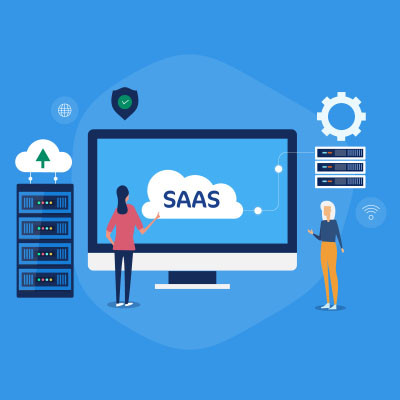Nowadays, small and medium-sized businesses need the right technological tools to drive efficiency and growth. Software-as-a-Service has emerged as a powerful, accessible model transforming business operations. Understanding SaaS, its benefits, potential management hurdles, and how expert support can help is crucial for local SMBs aiming to thrive.
ImageSys LLC Blog
Cloud computing has become a massively beneficial tool for businesses, offering scalability, flexibility, and significant cost savings. However, despite its many advantages, businesses often face several challenges when adopting or managing cloud-based solutions. One common issue is data security and privacy concerns.
Cloud computing has seen some incredible developments in the past few years, giving businesses and individuals access to a wide range of powerful cloud options. These innovations have completely changed how we store, access, and manage data, offering organizations nearly unlimited computing options, robust scalability, and some pretty substantial cost savings. Today, we’re diving into some of the top advanced cloud solutions available today and what makes them so great for the growing business.
What kind of cloud service does your business use, if it uses the cloud? There are private clouds, hosted and maintained on-site, and public clouds, where an external business will host and provide it on a subscription basis. While there are certain scenarios in which a private cloud is quite valuable, today, we want to focus the discussion on the more common of the two: the public cloud.
When it comes to getting the most value out of your business’ software infrastructure, it’s hard to argue with Software as a Service (SaaS). In fact, there are many solutions that are fueled by SaaS that power some of the world’s most lucrative companies. Let’s look at some examples of SaaS applications that can help even a small business revolutionize operations to save time and earn more profits simultaneously.
Technology has become a fundamental need for businesses of all sizes, with even small businesses needing to seek out options to cover their shifting needs. Fortunately, this technology has also become more reliable and readily available…and as a result, small businesses have more opportunities than ever to give their operations a welcome boost.
Cloud-hosted computing has been around for quite some time, but it has never been as accessible as it is today. It is now a commonly used resource for almost any type of business. In fact, the growth of cloud-based computing suggests that we are staring at a cloud-hosted future. Today, we wanted to discuss the cloud and how it has become the go-to solution for growing businesses.
The cloud can be a tricky beast to tame for your business, and it is mostly because of all the options you have at your fingertips to help your organization be as successful as possible with it. Let’s discuss some of the questions you need to ask to ensure you get the best value out of your cloud-based solutions.
The cloud provides businesses with all kinds of ways to be more productive throughout the workday, and while it’s great in most cases for companies that want to be more intentional with their infrastructures and budgets, there are certain cloud solutions that will be effective no matter what industry or professional endeavors you pursue.
Exploring how to fuel your business’ data needs typically comes down to whether or not you have the outstanding capital to purchase and manage your own IT infrastructure or if you are looking to utilize utility computing in the cloud to facilitate all of your business’ IT needs. This week, we thought we’d briefly discuss the pros and cons of cloud computing for your business and how much money, if any, moving to the cloud can save you.
Your desktop infrastructure is one of the most important parts of your organization, and there are several ways to manage it. One way is through Desktop-as-a-Service, an option that can help you move away from the traditional workstation and embrace a new technology management philosophy. How might you get value out of this service? Let’s take a look at what makes DaaS so special.
If you have to rely on remote workers as a small business, you might fear what they represent to your operations: a lack of control, security challenges, and of course, productivity issues. However, in today’s remote workplace, it is important to acknowledge that remote workers played a critical role in saving countless organizations throughout the course of the pandemic.
Your landline telephone may have once been a prominent part of your business’ communication infrastructure, but chances are that it’s fallen on hard times since you last used it. In fact, you might be surprised to find that there are quite a few arguments against using a landline for your organization’s phone system, especially with more modern tools eclipsing it in usefulness.
Businesses use a lot of technology to keep themselves competitive and operationally efficient. One way that organizations use to make their technology infrastructure more accessible is through the use of virtualization. Let’s discuss what virtualization is, how it benefits businesses, and some examples of how you might consider leveraging virtualization to your company’s benefit.
The cloud has provided organizations with countless ways to innovate and improve operations, but for those who are just now jumping on this great opportunity, you might have some questions about how to get the most out of the cloud or how to even get started. Let’s discuss some of the major benefits of cloud computing, as well as why it’s critical to consider it in the years to come.
The cloud has proven exceptionally useful to businesses in a variety of ways, as it offers a means for these businesses to continue accessing their crucial tools and solutions. Let’s examine a few utilities that your organization could receive via cloud services, and how they would benefit your processes.




















